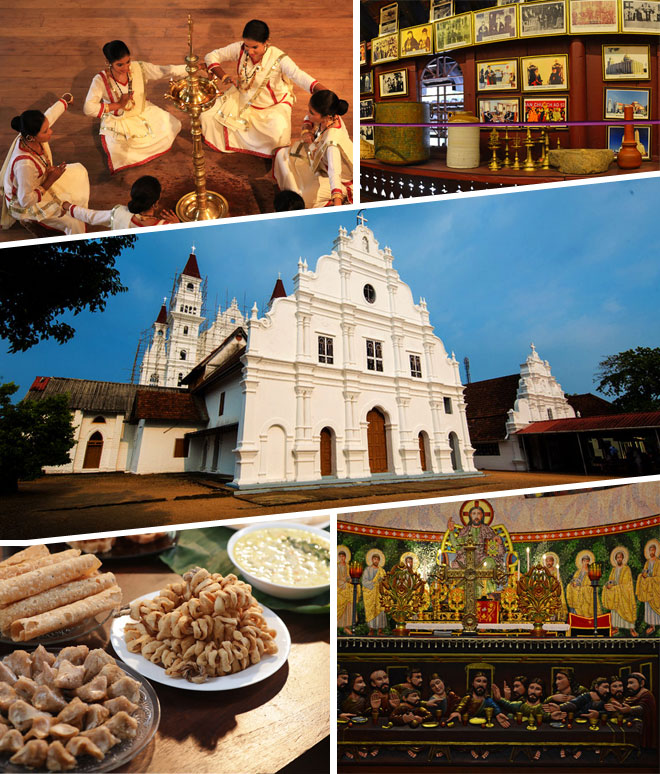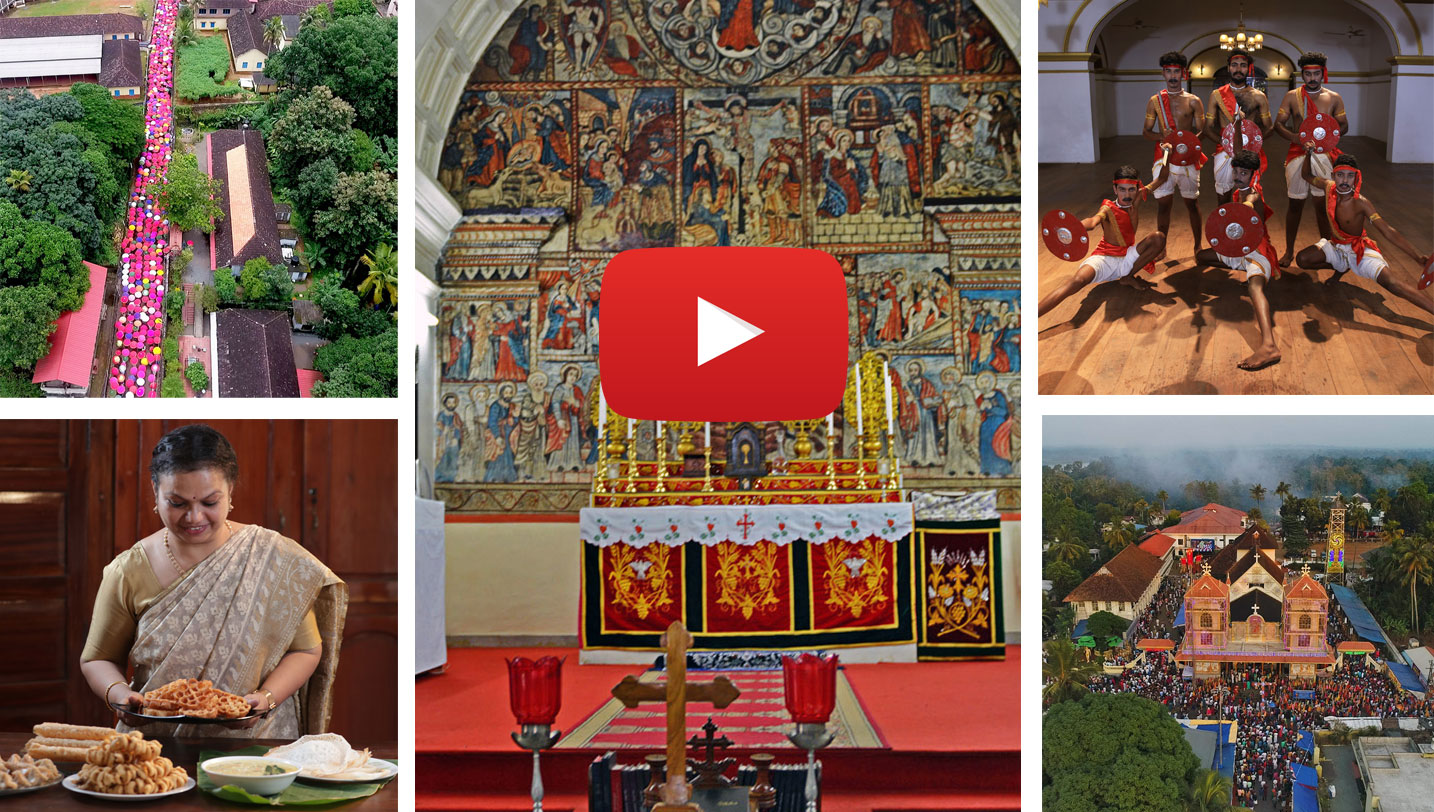Seven and half Churches (Ezhara Pallikal)
It is the churches established by St. Thomas which act as the affidavit for his gospel activities. Places of worship during CE first century were not huge constructions. Churches were meant as meeting places for small communities. While huge palaces and temples existed under the kings in Tamil Nadu and Karnataka, it was not the case in Kerala. Due to the climatic conditions of the state constructions did not last long. Churches were identified by the cross installed in front of them.
The locations of the seven churches have been identified from the chapter on St. Thomas in the Ramban Pattu, which also sketches his travels during the 1st century. What exists now of this text, is the reproduction made by the 48th priest of Maliekkal family.
It mentions the arrival of St. Thomas at Malayattoor, his baptizing of 220 persons, and then his tour to Palayoor, Malyankara, Kottakkal, Gokkamangalam and Kollam. He stayed at these places for a year, established churches, and then reached Chayal Mala. The churches were set up close to places on navigable trade routes. Subsequently, Christians stayed in groups and established markets in these places.
The Ramban Pattu also says that St.Thomas reached Kodungalloor by ship along with Haban and met the Chola King. The plot of the Ramban Pattu consists of his establishing the churches in Kollam, Niranam, Chayal, Palayoor, Kodungalloor, and Paravur and then moving to Mylapore where he was killed by Brahmins and his soul ascending to heaven escorted by angels. The churches he established, the hillocks where he offered prayers, and his tomb, are being considered sacred places.
Seven Churches established by St. Thomas
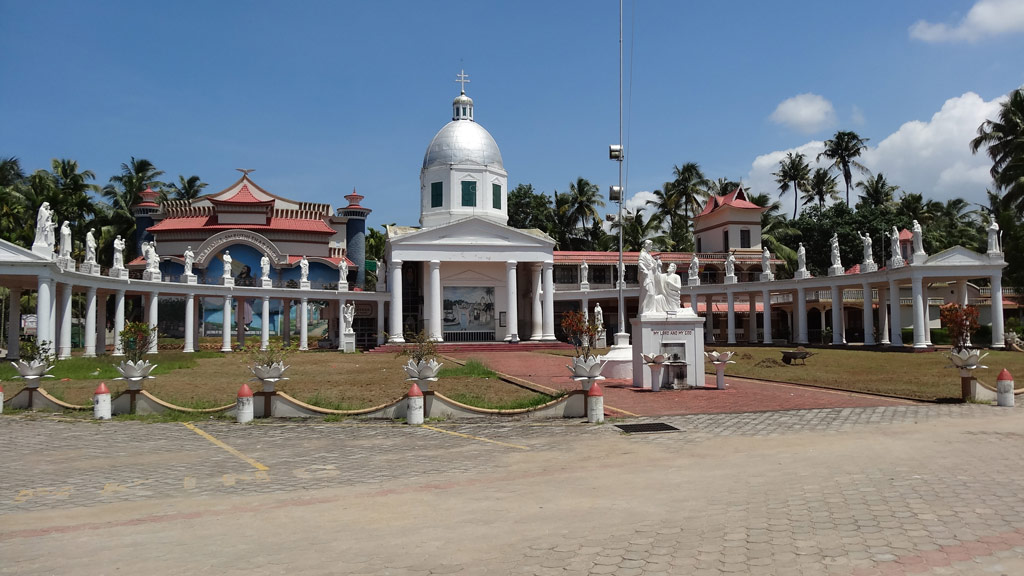
Kodungalloor Church:
The River Periyar splits into two at Aluva and its branch named Mangalapuzha reaches the sea passing through part of Kodungalloor. Vadakkekara, Thiruvanchikulam, and Kodungalloor are located on this sea coast. Kodungalloor finds a mention in the Roman documents as Muchiri. It was the capital of the Chera Kings. Malyankara mentioned in the Ramban Pattu is also on the coastal area in Kodungalloor. According to tradition, St.Thomas baptized the ruler of Kodungaloor, his family, and 40 Jews (Bernard, C.F., Mar Thoma Christians). It was at Kodungalloor that St.Thomas first preached the gospel and established the first church. Kodungalloor was also the site of the first churches of the Jews and of the Muslims. The places mentioned as Muyirikode and Singli in the copper plates of the Jews were also in Kodungalloor.
When the church established by St.Thomas in Kodungalloor was destroyed, is not known. When the Portuguese reached Kerala in the early 16th century, there were three churches, in the names of St.Thomas, Virgin Mary, and Kuriakose Sahada, in Kodungalloor. It was also the headquarters of a Bishop. One of the churches is believed to have been constructed by Knayi Thoma. Following the clashes between Arabs and Christians in the 9th century, many people migrated to the nearby areas. It is believed that the Christians who migrated to Angamaly, Vazhakulam, Koratty, Kanjoor, and Malayattoor were from Kodungalloor. In due course, the number of Christians in Kodungalloor dwindled.
Kollam Church:
Kollam was one of the main port cities on the Arabian coast. Ramban Pattu says that during the one year St. Thomas stayed there, he could convert 1,400 persons to Christianity. The Church established by St. Thomas is believed to have been destroyed due to sea erosion. It was probably the Christians who migrated from Persia who constructed the Theresa Church. It is believed that the church too was destroyed by sea erosion. Kollam was a port and trading centre known for the export of spices. Duarte Barbosa, who visited Kerala in 1514, has recorded the existence of a church set up by St. Thomas in Kollam. When Portuguese Governor, Albuquerque, reached Kollam in 1503, there were 2,000 St. Thomas Christian families there. When the Portuguese imposed on them Latin customs and conventions, they fled to Chathanoor and Adoor.
_large.jpg)
Niranam Church:
From Kollam St. Thomas went to Thrikapaleswaram, near Niranam, on the Thiruvalla- Mavelikkara route. St.Thomas is believed to have performed many miracles there. It is thought that the modern Mar Thoma Church stands at the place where a cross was erected and the Orthodox Church at the place where it was reinstalled. The church has a stone with an inscription about its renovation in 1259. The wall paintings in Niranam church are very famous. A museum has also been set up by the side of the church.
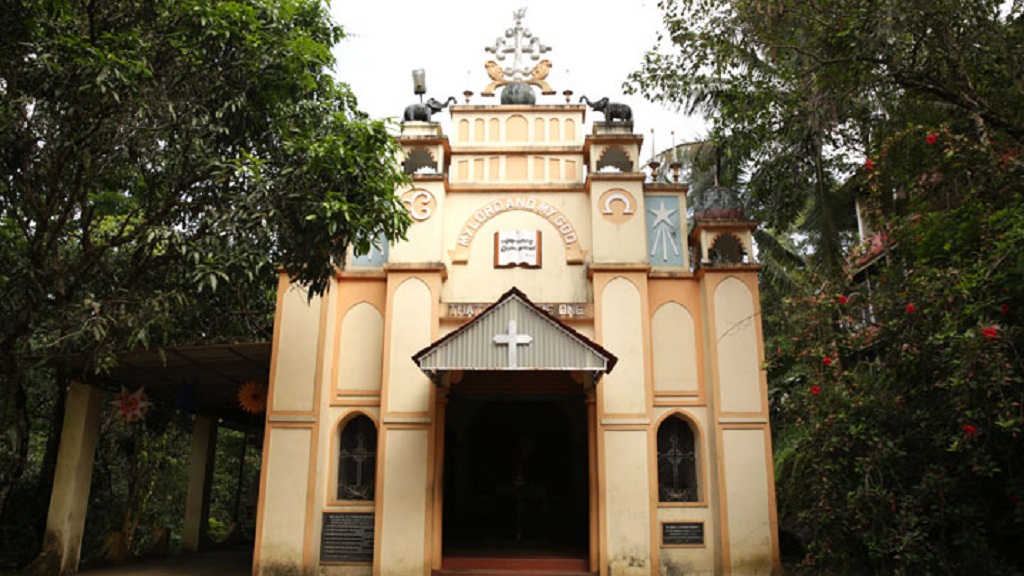
Nilakkal Church:
According to Ramban Pattu St.Thomas lived in Nilakkal for a year. Nilakkal is known as Chayal in certain documents. This was once a prominent city and commercial centre. Even now there are trade routes from here to Tamil Nadu through Sabarimala. During the 6th century, people fearing dacoits, are believed to have fled to Kanjirapally, Ranni, Thumbamon, Vadasserikara, and Erumeli. Remnants of Christian churches have been found in the forests. The present church stands on the land allotted by the Government in 1976.
Kokkamangalam Church:
This is a Christian dominated area on the coast near Pallipuram in Cherthala. St. Thomas is believed to have lived here for a year and converted 1,600 persons to Christianity. Kesari Balakrishna Pillai in his book, Charithrathinte Adiverukal (The Roots of History) says that St. Thomas set up a church here. Places near Kokkamangalam like Muttom, Pallipuram and Cherthala were some of the major centres of migration.
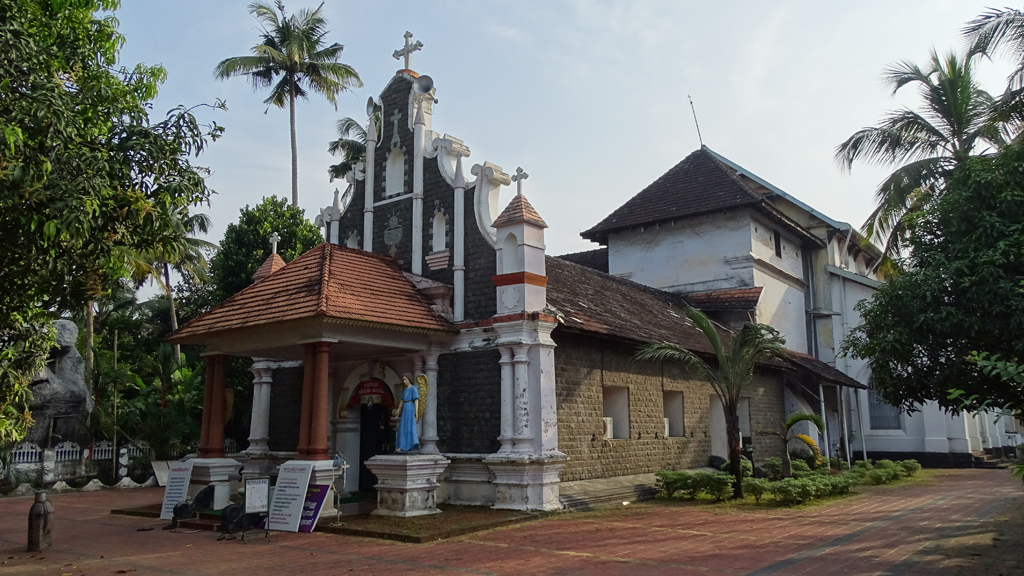
Kottakkavu Church:
This place was known as Kottakayal or Pattamana Paravur. The church founded by St. Thomas was destroyed in the attack of Tipu Sultan in the 18th century. The church we see today at North Paravur is the one constructed in its place.
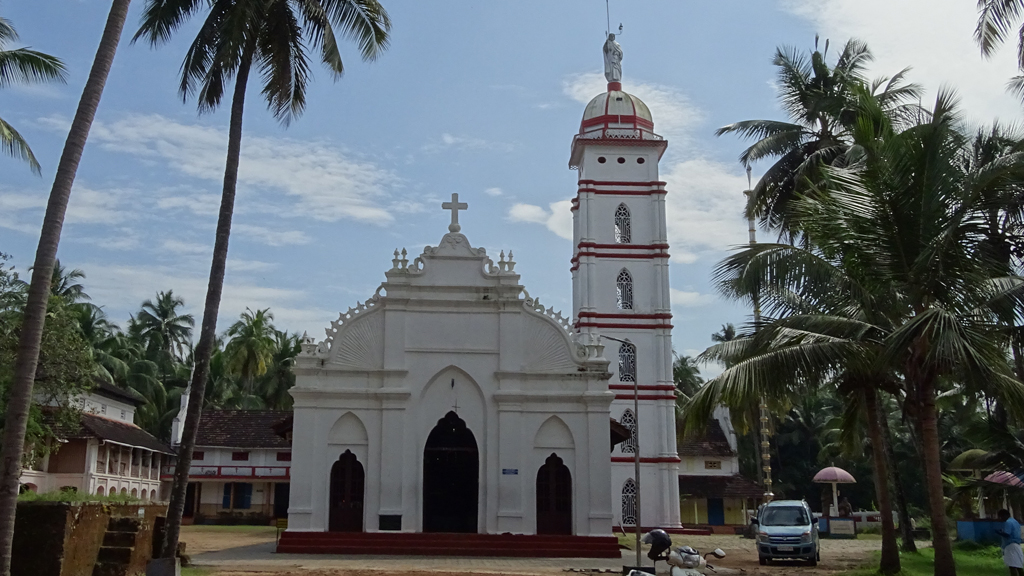
Palayoor Church:
Chavakkad, a coastal village in Ponnani taluk, was the place St. Thomas last visited. Palayoor was a Jewish settlement. The proof for this is the names of the places in the vicinity such as Yudakunnu and Yudakulam. The Jews migrated to Mala and Manjali from Palayoor. In the 16th century, Father Fenichi, a priest constructed a church covering the original church and then demolished the original. This can be seen in the structure of the existing church.
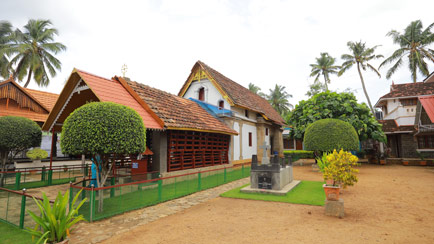
Arappallikal Church:
In places known as Arapallikal, St. Thomas had neither established a church nor formed a Christian community. Historians point out that he had set up only a shrine at these places.
Thiruvankottu Church:
This is one place in South Travancore where St. Thomas is said to have established a church. Legend says that he constructed only a cross and converted a few and it is believed that St. Thomas left for Mylapore after appointing two priests named Yakob and Alexenthrios. Thiruvankottu is near Padmanabhapuram which was the seat of the Travancore royal family. Missionary activities were conducted here later with Nagercoil as the centre.
Malayattoor Church:
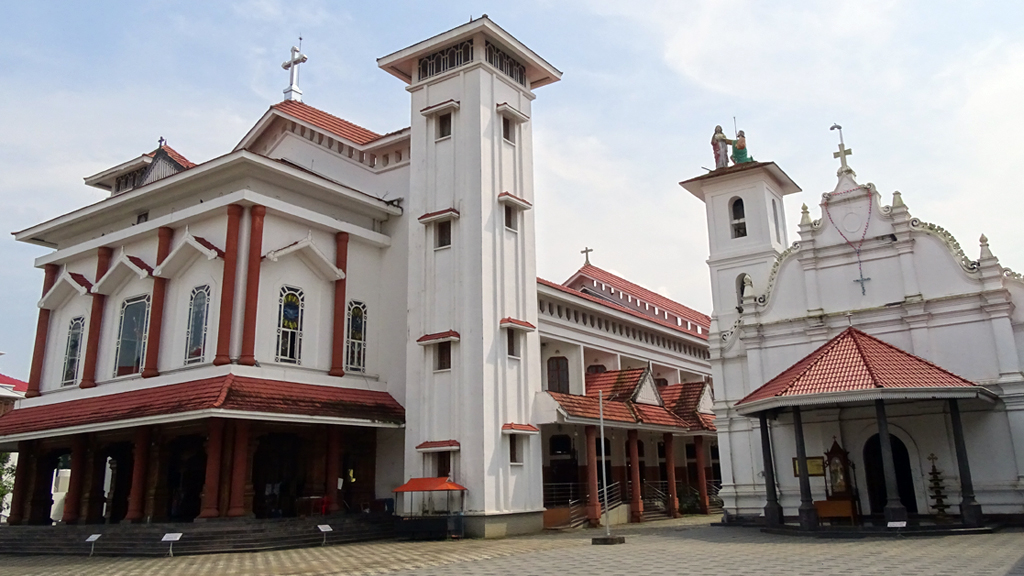
As per a legend, when St. Thomas was meditating on the Malayattoor hills, Virgin Mary appeared before him. On his way to Tamil Nadu, St. Thomas is understood to have offered prayers on a rock in Malayattoor and drew the picture of a cross on it. Subsequently, it is said that a golden cross was seen on the rock. There was a trade route from Kodungalloor to Madura via Malayattoor. The golden cross on the rock was found in CE 500, by a group of hunters who passed by the rock. A church was constructed there later. Thus the place earned the name Golden Cross Hillock. The area was inhabited by sheep, and the food given to them, namely gingelly and salt, became the offering in the church in due course. During the Sunday following Easter, pilgrims climb the hill with devotion chanting the name of St. Thomas, who is popularly known here as Muthappan. In Government documents, this hill is known as Kurisumudi.
It is argued that Aruvithara near Pala is one of the minor churches. Aruvithara was an ancient marketplace, where the traders from Pala brought their ware. Yachts used to reach here along the Meenachil River (Edamaruku, Joseph, Kerala Culture).
The church at Arthat in Kunnamkulam is also thought to have been established by St. Thomas (Mathew, Dr.P.C., Arthat Padiyola). This place was originally known as Chattukulangara. En route to Tamil Nadu, St. Thomas is believed to have erected a cross at Mylakombil in Thodupuzha.
- The Tradition of St. Thomas
- The arrival of St. Thomas
- Seven and half Churches
- Post St. Thomas arrivals
- The scenario before the arrival of Gama
- Missionary Activities
- Descriptions of St. Thomas Christians
- The Padruodo
- Portuguese Forts
- Synod of Diamper
- Latinization of Churches
- Coonan Cross Oath
- Post Koonan Kurissu
- Establishment of churches
- Starting of Seminaries
- Anglo Indians
- Migrations to Malabar
